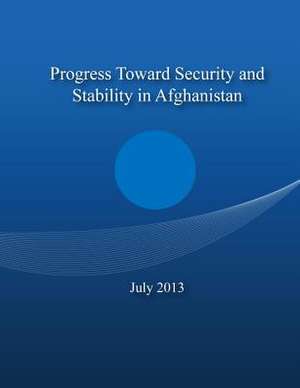Progress Toward Security and Stability in Afghanistan
Autor Department of Defenseen Limba Engleză Paperback
Preț: 79.63 lei
Nou
Puncte Express: 119
Preț estimativ în valută:
15.24€ • 15.85$ • 12.58£
15.24€ • 15.85$ • 12.58£
Carte disponibilă
Livrare economică 25 martie-08 aprilie
Preluare comenzi: 021 569.72.76
Specificații
ISBN-13: 9781502764669
ISBN-10: 1502764660
Pagini: 190
Dimensiuni: 216 x 279 x 10 mm
Greutate: 0.45 kg
Editura: CREATESPACE
ISBN-10: 1502764660
Pagini: 190
Dimensiuni: 216 x 279 x 10 mm
Greutate: 0.45 kg
Editura: CREATESPACE
